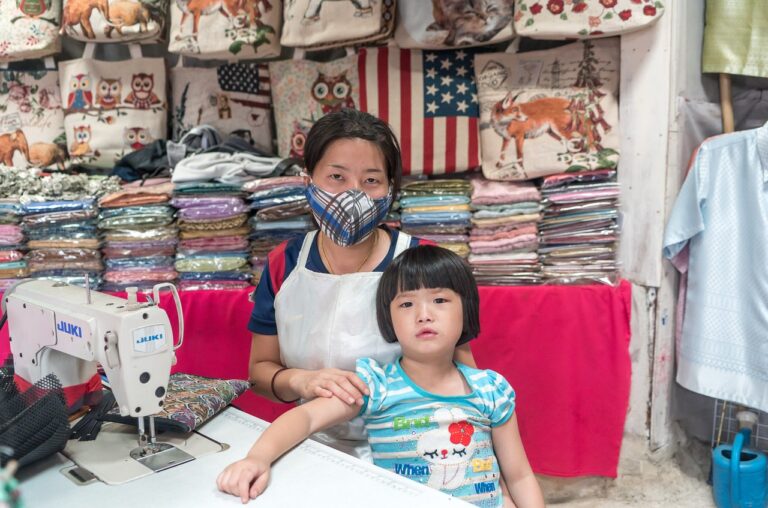Mindful Parenting Mindfulness Practices: Teaching Children Emotional Regulation and Resilience
Modeling self-regulation is a powerful way for parents and caregivers to teach children how to manage their emotions and behavior effectively. When children observe adults handling challenging situations calmly and thoughtfully, they are more likely to learn these important skills themselves. By demonstrating self-control and resilience in the face of stress or frustration, adults provide a valuable example that children can emulate in their own lives.
Furthermore, modeling self-regulation helps to create a positive and respectful relationship between adults and children. When adults exhibit self-regulation, they show children that it is possible to navigate difficult emotions and situations without resorting to outbursts or impulsive reactions. This sets the tone for open communication and mutual understanding, fostering a sense of trust and security within the family dynamic. By consistently modeling self-regulation, adults can help shape children’s emotional intelligence and equip them with essential tools for managing their own emotions in a healthy and constructive manner.
Recognizing and Validating Children’s Emotions
Children’s emotions are complex and varied, ranging from joy and excitement to frustration and sadness. It is crucial for parents and caregivers to pay attention to these emotions, even when they may seem trivial or irrational. By recognizing and validating children’s emotions, we help them feel understood and supported, which in turn builds their self-esteem and emotional resilience.
Validating a child’s emotions does not necessarily mean agreeing with their behavior or actions. Instead, it involves acknowledging and accepting how they feel in a non-judgmental manner. When we validate their emotions, we are teaching them that it is okay to feel a certain way and that their feelings are valid, promoting openness and trust in our relationships with them.
Teaching Strategies for Calming the Mind and Body
Incorporating strategies to calm the mind and body is essential for helping children manage their emotions and stress levels effectively. One effective technique is deep breathing exercises, as they can help slow down racing thoughts and promote relaxation. Encouraging children to take deep breaths in through their nose and out through their mouth can be a simple yet powerful tool for self-regulation.
Cultivating Gratitude and Positivity
Gratitude and positivity are essential qualities to nurture in children from a young age. Encouraging them to appreciate the little things in life can help shape their outlook and attitude towards challenges and setbacks. By highlighting moments of joy and expressing thankfulness for the people and experiences around them, children can learn to focus on the positive aspects of their lives.
Promoting a sense of positivity also involves teaching children to practice kindness and compassion towards others. By fostering a mindset of empathy and gratitude, children can develop a deeper sense of connection with the world around them. Encouraging them to look beyond themselves and consider the feelings and perspectives of those around them can foster a more inclusive and harmonious environment for growth and learning.
Encouraging Empathy and Compassion
Encouraging empathy and compassion in children is crucial for their emotional and social development. By teaching children to understand and relate to the feelings of others, we are fostering a sense of kindness and connection that can positively impact their relationships with peers and adults. It’s important to model empathy ourselves and provide opportunities for children to practice acts of kindness and consideration towards others.
Empathy and compassion can be nurtured through simple daily interactions, such as encouraging children to listen actively when someone is sharing their feelings or acknowledging when someone is in need of support. By highlighting the importance of considering others’ perspectives and feelings, we are helping children build strong foundations for healthy relationships and a more inclusive community.
Promoting Problem-Solving Skills
Problem-solving skills are essential for children to navigate life’s challenges effectively. By encouraging children to identify problems, brainstorm solutions, and evaluate the most appropriate course of action, parents and educators can help them develop a crucial life skill. Providing opportunities for children to practice problem-solving in various contexts, such as resolving conflicts with peers or tackling academic puzzles, can enhance their critical thinking abilities and self-confidence.
When children encounter obstacles or setbacks, adults can guide them through the problem-solving process rather than offering immediate solutions. This approach empowers children to think independently and develop resilience in the face of adversity. By acknowledging children’s efforts in finding solutions and praising their perseverance, adults can reinforce the importance of persistence and creative thinking in problem-solving situations.
Creating a Safe and Supportive Environment
Creating a safe and supportive environment for children is essential for their overall well-being and development. A nurturing space allows children to feel secure, valued, and respected, fostering a sense of belonging and trust. When children feel safe in their environment, they are more likely to explore, learn, and engage with others in a positive and constructive manner.
Setting clear expectations, providing consistent routines, and offering unconditional love and support are key elements in establishing a safe and supportive environment for children. By demonstrating empathy, active listening, and open communication, adults can create a space where children feel comfortable expressing themselves and seeking help when needed. Additionally, creating physical environments that are organized, child-friendly, and free from hazards can further enhance feelings of safety and security for children.
Setting Realistic Expectations and Boundaries
When it comes to fostering a supportive environment for children, setting realistic expectations and boundaries is essential. By establishing clear guidelines and limits, parents can help children understand what is acceptable behavior and what is not. This can provide a sense of structure and security, leading to a more harmonious family dynamic.
Setting realistic expectations also helps children develop a sense of responsibility and accountability. By clearly communicating what is expected of them, children can learn to take ownership of their actions and choices. This can foster a sense of independence and self-confidence, laying the foundation for positive growth and development.
Fostering a Growth Mindset
When it comes to nurturing a growth mindset in children, it is essential to focus on praising their efforts rather than just the outcomes. Encouraging them to see challenges as opportunities for learning and growth can help instill a belief that their abilities can be developed over time with dedication and perseverance. By emphasizing the importance of resilience and the power of yet, children can learn to embrace setbacks as stepping stones towards improvement.
Another key aspect of fostering a growth mindset is to teach children the value of feedback and constructive criticism. By helping them understand that feedback is a tool for growth rather than a judgment of their abilities, children can develop a positive attitude towards learning from mistakes and continuously improving themselves. Creating a safe and supportive environment where mistakes are viewed as learning experiences can empower children to take risks, try new things, and ultimately develop a mindset that is focused on progress and development.
Practicing Mindfulness as a Family
Engaging in mindfulness practices as a family can foster stronger connections and emotional well-being among members. Mindfulness involves being fully present in the moment without judgment, which can help reduce stress and increase feelings of calmness. Setting aside dedicated time for activities like mindful breathing, body scans, or gratitude exercises can create a sense of togetherness and relaxation in the family environment.
By incorporating mindfulness into daily routines, families can develop a deeper understanding of each other’s emotions and perspectives. When parents and children practice mindfulness together, they learn to regulate emotions, communicate effectively, and respond to challenges with more patience and compassion. This shared experience of mindfulness can strengthen bonds, improve mental resilience, and create a supportive environment where everyone feels heard and valued.
How can practicing mindfulness as a family benefit our relationships?
Practicing mindfulness as a family can improve communication, empathy, and problem-solving skills, leading to stronger and more supportive relationships.
What are some simple mindfulness exercises that families can do together?
Some simple mindfulness exercises include deep breathing exercises, guided meditations, mindful eating, and body scan practices.
Can children benefit from practicing mindfulness?
Yes, children can benefit greatly from practicing mindfulness. It can help them regulate their emotions, improve focus and attention, and develop compassion and empathy.
How can parents model self-regulation for their children?
Parents can model self-regulation by managing their own emotions in a healthy way, practicing self-care, and using mindfulness techniques to stay calm in challenging situations.
What is the importance of cultivating gratitude and positivity in a family?
Cultivating gratitude and positivity can help family members appreciate the present moment, focus on the good things in their lives, and strengthen their bond with each other.
How can families create a safe and supportive environment for practicing mindfulness?
Families can create a safe and supportive environment by listening to each other without judgment, offering encouragement and support, and practicing mindfulness together regularly.
Can practicing mindfulness as a family help children develop problem-solving skills?
Yes, practicing mindfulness can help children develop problem-solving skills by teaching them to approach challenges with a calm and focused mind, and by encouraging them to think creatively and reflect on different solutions.
What are some strategies for teaching children to calm their minds and bodies?
Some strategies for teaching children to calm their minds and bodies include deep breathing exercises, progressive muscle relaxation, visualization techniques, and mindfulness meditation.
How can families promote empathy and compassion through mindfulness practices?
Families can promote empathy and compassion by encouraging children to think about the feelings and perspectives of others, practicing loving-kindness meditations, and engaging in acts of kindness and service together.







